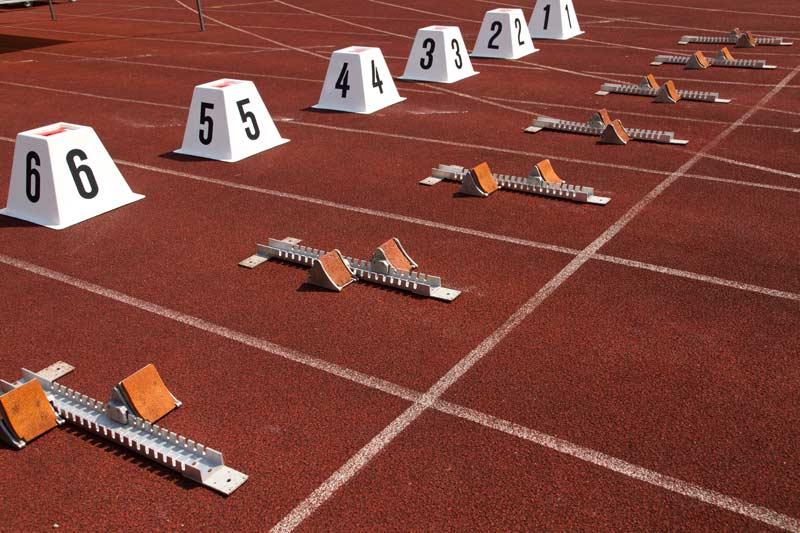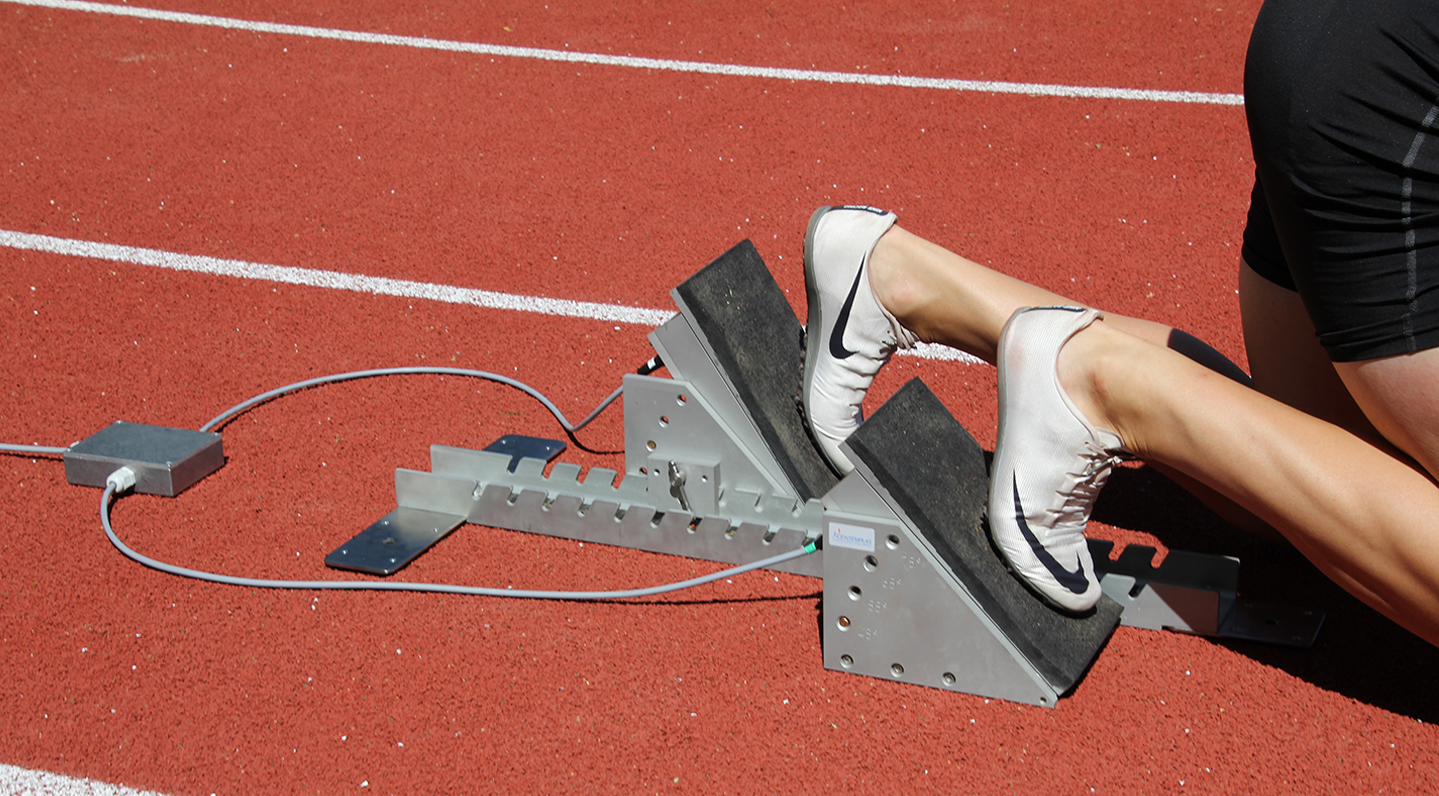Mastering Performance with Starting Block Analyzer

Understanding the Starting Block Analyzer
In the world of athletics, every second matters. Whether it’s sprinting, hurdles, or relays, a strong start can decide the winner. That’s where the Starting Block Analyzer comes into play. It’s a smart tool designed to help athletes improve their take-off during races. With detailed analysis, this device shows how runners push off from the starting blocks, helping coaches and athletes make improvements.
The Starting Block Analyzer uses sensors and software to measure force, reaction time, and balance. This is especially useful for sprinters who need to explode out of the blocks. By checking data from each start, the device shows what’s working and what needs change.
In this article, we will explore this tool in detail. You will learn how it works, its benefits, how to use it, and much more. The goal is to explain everything in simple words so anyone can understand, even if they’re not tech-savvy.
Let’s dive into the world of the Starting Block Analyzer and see how it’s helping athletes reach their best speed from the very first step.
What Is a Starting Block Analyzer?
A Starting Block Analyzer is a smart device used by athletes, especially sprinters, to study their performance at the start of a race. It is placed on or within the starting blocks – the equipment runners use to push off at the beginning of a race. This analyzer collects data like how fast a runner reacts, how much force they use, and how their body is positioned.
In simple terms, this tool tells you how strong and fast your push-off is when the race begins. For example, if a runner is slow to react when the gun goes off, the analyzer will show that. Or if the left leg pushes harder than the right, it will display that difference.
The tool often comes with sensors that connect to a computer or mobile device. These sensors measure force, balance, pressure points, and timing. Some analyzers also have visual displays or software that gives you a full report after every start.
The best part is that this tool helps identify mistakes that can cost time. A delayed reaction or an uneven push-off might seem small but can make a big difference in competitive races.
So, whether you're an athlete, coach, or sports enthusiast, knowing how the Starting Block Analyzer works can help you see what’s really happening during the first few seconds of a race. It’s not just about running fast—it’s about running smart right from the start.
Why Sprinters Use This Device
Sprinters use the Starting Block Analyzer because the first second of a sprint is often the most important. Races like the 100-meter dash are so short that a slow reaction or poor technique at the start can ruin the whole run.
This device helps sprinters understand exactly how they are pushing off the blocks. For example, it can show if they are putting more pressure on one foot or leaning too much to one side. Even small things like hand placement or body position matter. The analyzer gives accurate feedback that can be used to fix these small mistakes.
Another big reason athletes use it is to track progress. Over weeks or months, they can see how their starts improve. Are they reacting faster to the gun? Are they using more power? Are they becoming more balanced? The analyzer answers all these questions.
Coaches love it too. Instead of guessing what went wrong, they get data and video evidence. This makes it easier to guide the athlete in the right direction.
Also, using a Starting Block Analyzer can prevent injuries. If a runner is not balanced or pushing too hard on one side, it can lead to muscle strain or joint pain. The analyzer helps identify these risks early.
So, for anyone serious about sprinting, this device is not just a luxury. It’s a smart investment to perform better, stay safe, and win more races.
Key Features of the Analyzer
The Starting Block Analyzer comes packed with useful features that make it a powerful tool for athletes and coaches. Here are the key features you can expect:
1. Force Measurement:
The device checks how much pressure each foot applies on the starting blocks. This shows whether both legs are pushing equally or if one leg is stronger than the other.
2. Reaction Time Tracking:
This is the time it takes for an athlete to respond after the starting signal (like the sound of a gun). The faster the reaction time, the better the start.
3. Pressure Distribution:
The analyzer maps out where pressure is applied on the feet. It helps athletes balance their body for an even take-off.
4. Real-Time Feedback:
Many analyzers provide immediate results through mobile apps or connected screens. This lets athletes review their performance seconds after each run.
5. Data Logging and Reports:
The device stores all performance data so athletes and coaches can track improvement over time. Reports include charts, graphs, and summaries that are easy to understand.
6. Video Synchronization (in advanced models):
Some analyzers can sync with video recordings to give a visual plus data breakdown of the start. This makes feedback even more powerful.
7. Compact and Portable Design:
Most analyzers are lightweight and easy to carry. Athletes can use them on the track or even during training sessions at home or in gyms.
Each of these features helps athletes perfect their starting technique, avoid injury, and train more effectively. With such precise tools, improving sprint performance becomes more science than guesswork.
How To Use It Effectively
Using the Starting Block Analyzer effectively is simple if you follow a step-by-step method. First, set up the starting blocks and connect the analyzer. Make sure everything is placed securely and aligned correctly with the running lane.
Once installed, sync the device with your mobile app or computer software. Most analyzers will connect via Bluetooth or a cable. Open the app and start a new training session. Some systems might ask for basic details like the athlete’s name, height, or weight.
Now, the athlete gets into the starting position. When the analyzer detects movement or hears the start signal, it begins recording. After the run, the system shows important data—reaction time, force, balance, and more.
Here are some tips for better use:
-
Use It Regularly: Don’t wait for a big event to start analyzing. Regular training with the device helps you see real improvement over time.
-
Check Your Data After Each Run: Don’t ignore the results. Go over your numbers after every session and compare them with previous ones.
-
Record Videos: If your system supports it, record your starts. Watching yourself along with the data helps fix errors faster.
-
Train With a Coach: If possible, have a coach or trainer nearby to guide you on how to use the feedback correctly.
-
Be Patient and Consistent: Improvement takes time. Don't expect perfect results after a few uses.
When used correctly, the Starting Block Analyzer becomes a personal coach that gives clear, honest feedback every time you train.

Benefits for Coaches and Athletes
The Starting Block Analyzer is not only helpful for athletes but also a game-changer for coaches. Here are the main benefits both sides can enjoy:
1. Immediate Feedback:
Athletes don’t have to wait. They can see what went right or wrong in seconds. This saves time and makes training more focused.
2. Accurate Data for Coaches:
Instead of guessing, coaches get detailed numbers. They can plan training better, fix small errors, and explain things clearly to the athlete.
3. Builds Confidence in Athletes:
When sprinters see progress through data, they feel more confident. It’s one thing to feel better, but another to see better stats.
4. Safer Training:
The device warns about unbalanced forces or awkward positions. These could lead to injuries if not fixed. The analyzer helps reduce that risk.
5. Easy Tracking Over Time:
Keeping a record is important. The analyzer stores past data so everyone can see how the athlete is improving day by day or week by week.
6. Helps Create Better Techniques:
With exact measurements, athletes can try new techniques and immediately see if they are working or not.
7. Makes Team Training Easier:
In team sports like relays, coaches can compare each athlete’s start and make better team strategies.
In short, this tool creates smarter, safer, and more successful athletes. It’s like having a personal assistant focused only on the most critical part of the race—the start.
Choosing the Right Analyzer Device
Not all Starting Block Analyzers are the same. If you’re thinking of buying one, here’s what you should look for:
1. Accuracy:
Choose a device that provides precise data. You don’t want false readings or missed signals. Check reviews and feedback before buying.
2. Easy Setup:
A good analyzer should be quick to set up and use. You shouldn’t need an engineer to figure it out. Look for user-friendly models with mobile apps.
3. Compatibility:
Check if it works with your existing devices—like phones, tablets, or laptops. Some work with both iOS and Android; some don’t.
4. Budget-Friendly Options:
There are high-end analyzers for professionals and affordable ones for beginners. Pick the one that fits your budget and needs.
5. Durable and Portable:
Make sure it’s tough enough to handle regular use. Also, lightweight models are easier to carry and set up at any training ground.
6. Good Customer Support:
If something goes wrong, it’s helpful to have a responsive support team. Choose brands with good online support or local dealers.
7. Update and Software Features:
Some devices come with regular updates and new features. Choose an analyzer with software that can grow with your training needs.
Making the right choice means better results and less frustration. Whether you’re a coach, a school, or a solo athlete, the Starting Block Analyzer you pick can make a big difference in your performance.
Conclusion: Better Starts Lead to Wins
The Starting Block Analyzer is more than just a gadget—it’s a tool that helps turn good athletes into great ones. By offering clear data and instant feedback, it supports smarter training and better performance.
From understanding reaction time to fixing body position, the device focuses on the part of the race that matters the most—the beginning. Whether you're a beginner or a professional, this tool helps you run faster, safer, and smarter.
So if you’re serious about sprinting success, investing in a Starting Block Analyzer might be the best step you take—literally and figuratively.
Frequently Asked Questions (FAQs)
Q1: Who should use a Starting Block Analyzer?
A: Sprinters, coaches, sports schools, and even physiotherapists can use it to improve start techniques and avoid injuries.
Q2: Is it hard to use for beginners?
A: No, most devices are very user-friendly. They come with apps and guides that make setup and use simple.
- Art
- Causes
- Crafts
- Dance
- Drinks
- Film
- Fitness
- Food
- Games
- Gardening
- Health
- Home
- Literature
- Music
- Networking
- Other
- Party
- Religion
- Shopping
- Sports
- Theater
- Wellness


